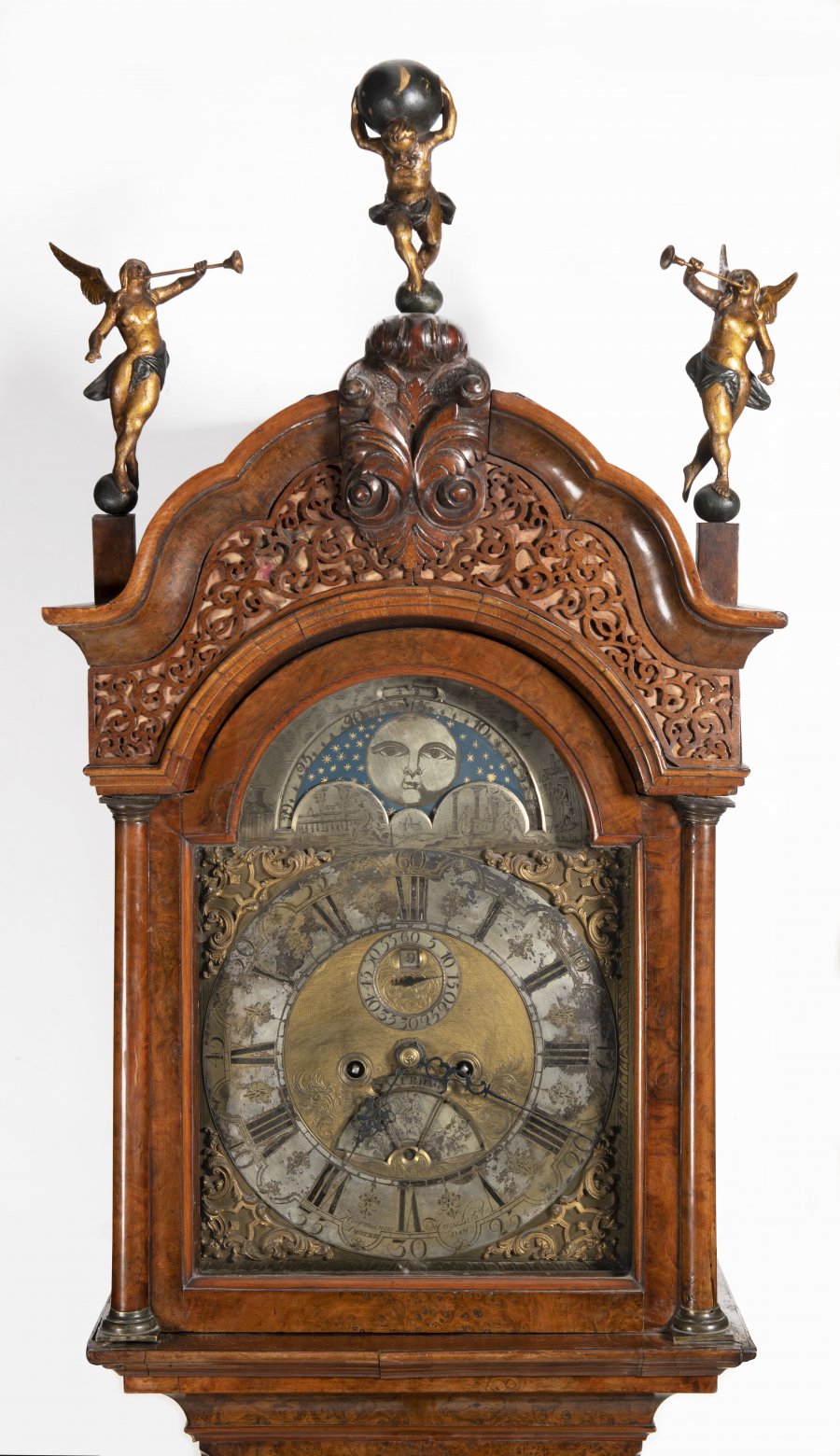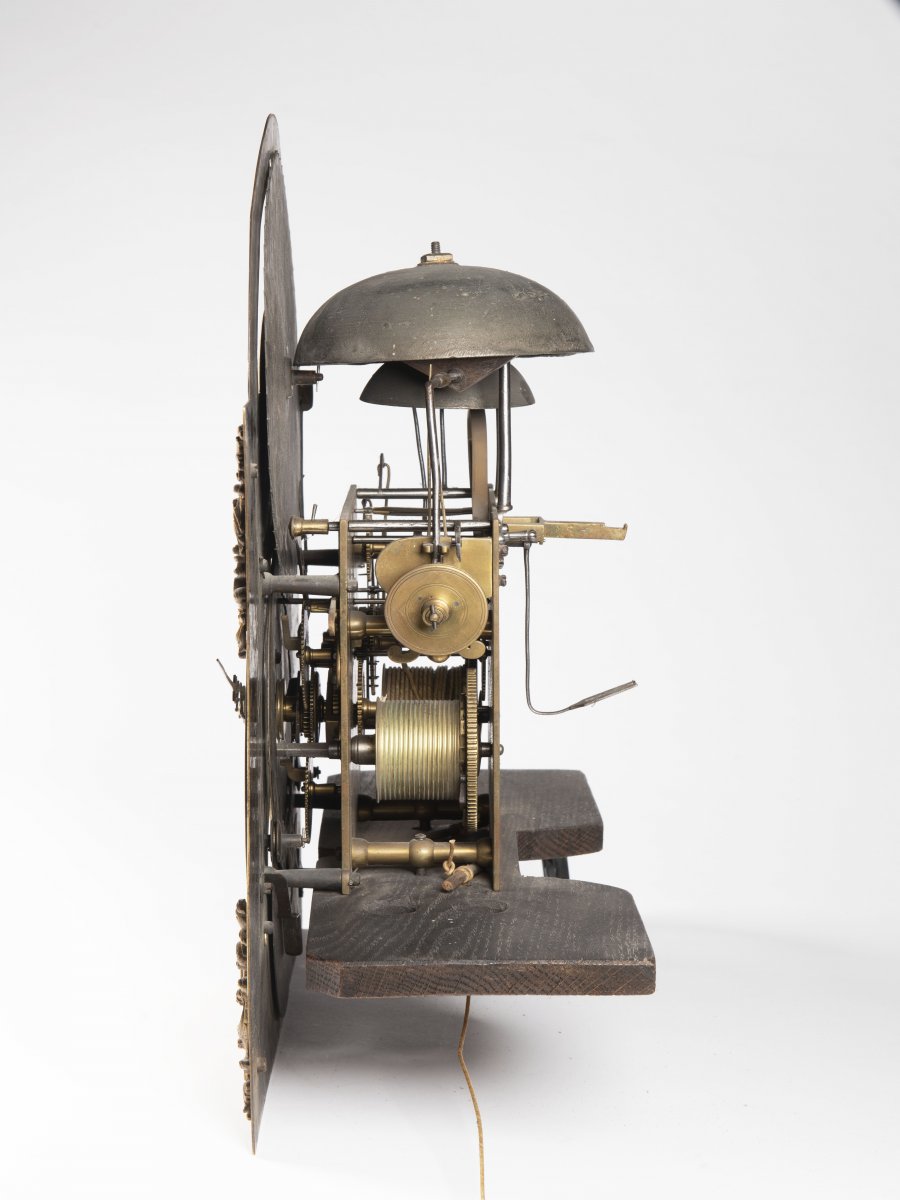Lot 18
A DUTCH LONGCASE CLOCK
First quarter of 18th century
Walnut, birdseye, gilded bronze, fabric, brass
260 x 54 x 36 cm (h x w x d)
Signed: Harmanus Huyslandt
| 4 400 €
| 5 600 €
Longcase clocks began to be manufactured in the Netherlands at the end of the 17th century due to cooperation with English clockmakers. Since then, they have become extremely popular here, which has increased their quality, luxurious choice of the finest woods, and representativeness. At the top of the clock, as a typical feature, there are a pair of carved sculptures of angels with fanfares between the statue of Atlas carrying the weight of the earth. It was the Atlas motif that became a characteristic symbol for the expansive Holland, which was used in a monumental form by the new Amsterdam City Hall from the mid-17th century. The offered, very rare longcase clock has a box made of walnut wood with a rich drawing in the upper part with a carved ornament with red fabric and a masterful central rococo carving. The Dutch clock machine differed mainly in its various functions, while the choice pointed to the prestige of the owner. The offered clock has an above-standard design of the following functions: central silver-plated circle, in the corners with baroque gilded bronze, with Roman and Arabic numerals and steel hands, inside a small circle with a minute hand and an indicator of the day of the month. In the lower half, an indicator of the day with the appropriate engraved alternating deity. Above the dial is a lunar calendar with phases of the moon and days of the month with engraved figural scenes. Beating on two bells with two weights.
Signed below on the dial: Harmanus Huyslandt AMSTERDAM. He worked as a clockmaker in Amsterdam in the first quarter of the 18th century. This is a top art and craftwork combined with the incredible technical skills of the clockmakers of the time.
More works from auction
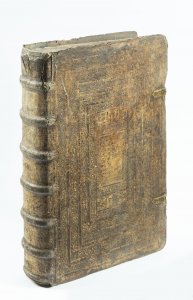
Lot 1 ECCLEASTICAL HISTORY
Starting price12 000 CZK | 480 €
Price realized
13 000 CZK | 520 €
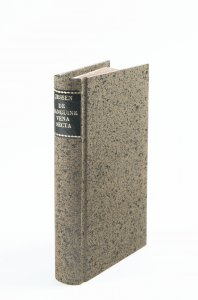
Lot 2 MEDICINE
Starting price18 000 CZK | 720 €
Price realized
20 000 CZK | 800 €
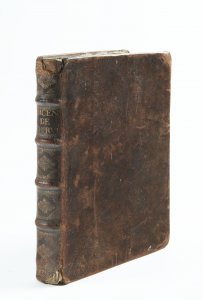
Lot 3 SURGERY MANUAL
Starting price18 000 CZK | 720 €
Price realized
22 000 CZK | 880 €
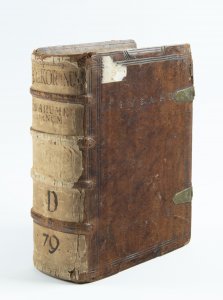
Lot 4 GERMAN QURAN
Starting price12 000 CZK | 480 €
Price realized
14 000 CZK | 560 €
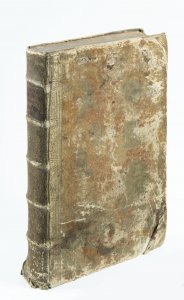
Lot 5 PERSPECTIVE FOR PAINTERS AND ARCHITECTS
Starting price9 000 CZK | 360 €
Price realized
25 000 CZK | 1 000 €
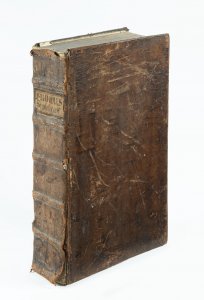
Lot 6 SYMBOLIC WORLD
Starting price9 000 CZK | 360 €
Price realized
9 500 CZK | 380 €
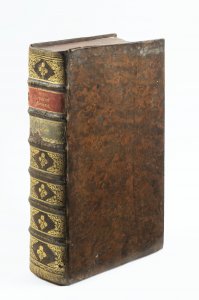
Lot 7 LEGAL HANDBOOK
Starting price12 000 CZK | 480 €
Price realized
12 000 CZK | 480 €
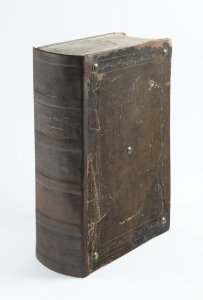
Lot 8 BIBLE OF SAINT WENCESLAS
Starting price30 000 CZK | 1 200 €
Price realized
30 000 CZK | 1 200 €
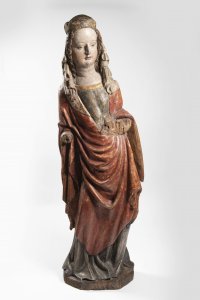
Lot 9 HIGH GOTHIC MARY, MOTHER OF JESUS
Starting price300 000 CZK | 12 000 €
Price realized
300 000 CZK | 12 000 €
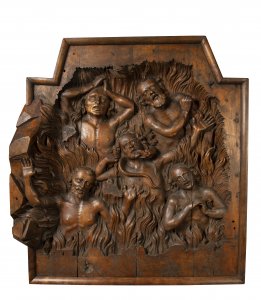
Lot 10 A PURGATORY
Starting price140 000 CZK | 5 600 €
Price realized
200 000 CZK | 8 000 €
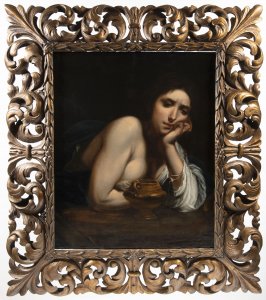
Lot 11 PENITENT MARY
Starting price35 000 CZK | 1 400 €
Price realized
37 000 CZK | 1 480 €
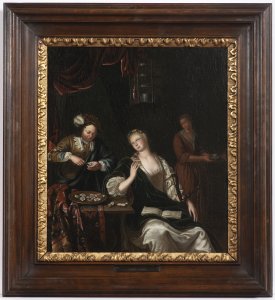
Lot 12 A COURT MOTIF
Starting price75 000 CZK | 3 000 €


